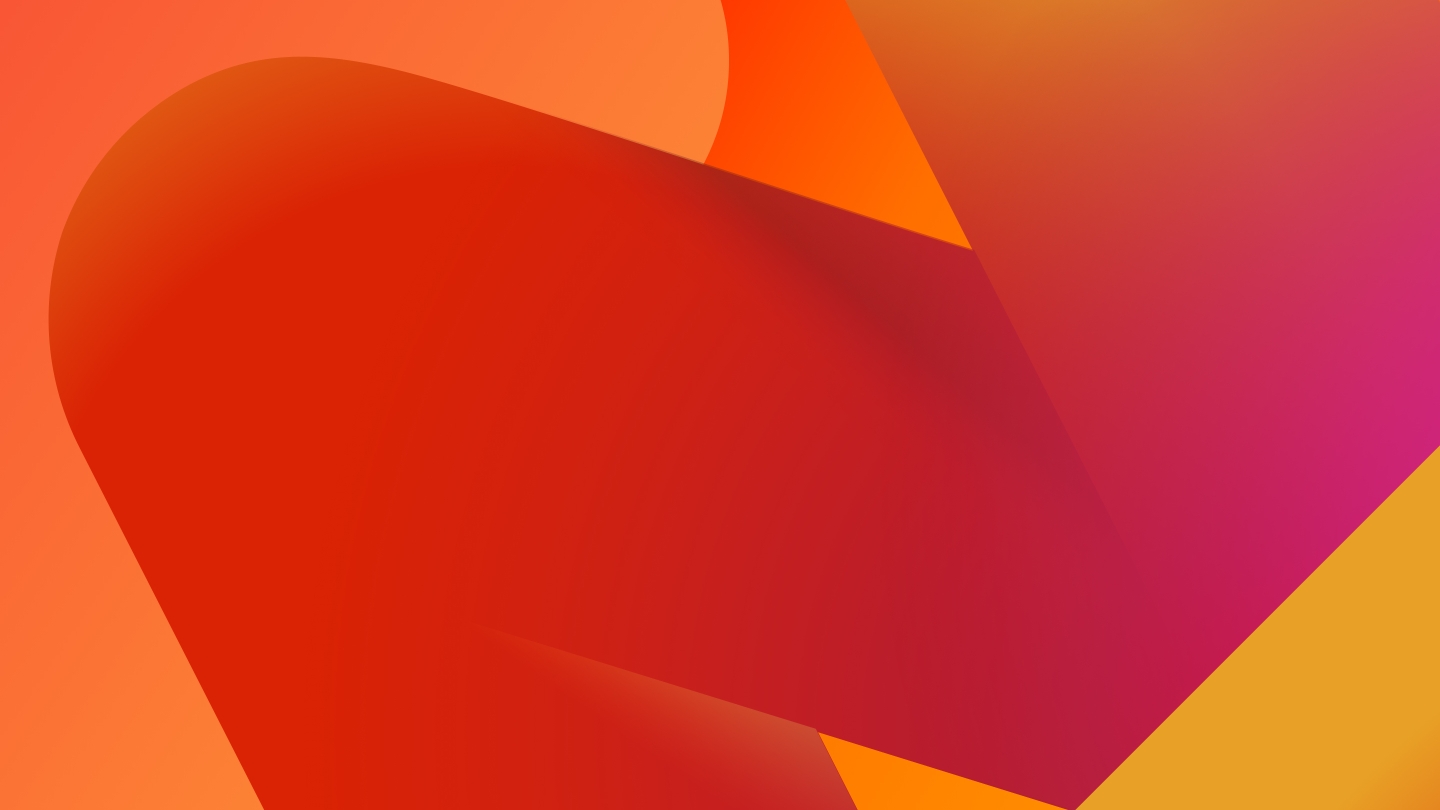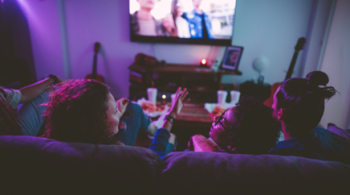If you buy online or walk into your local branch of Currys looking for a new TV, chances are that you’ll be met with a wall of confusing specifications, but what do they all mean? We’re here to demystify the TV experience, explaining the background behind the stats and what’s actually important. Whether it’s to help you buy your next television or just learn a bit more, this guide should make it that little bit easier to understand your television.
Screen size
Televisions have their size quoted in inches. This measurement actually refers to the screen size and is taken diagonally from corner to corner. Using this as a general comparison lets you compare sets between different manufacturers, but this size isn’t the full information.
Deeper in the specs, you’ll most likely find full dimensions quoted as height, width and depth. These figures take into account the full size of the television, including extras such as bezels (the frame surrounding the screen).
Resolution
A TV’s resolution is quoted as either a standard name or the number of pixels (horizontal x vertical). The main standards are HD Ready (1280 x 720 pixels), Full HD (1920 x 1080) and 4K Ultra HD (3840 x 2060), although there are a growing number of 8K (7680 x 4320) televisions.
Each pixel is a square dot, with the full array making up the final picture (think of them as squares on graph paper). Technically speaking, each full pixel is made up of three smaller subpixels: one each for red, green and blue, which are adjusted to mix in practically any colour.
In general terms, the more pixels you have, the more detailed the final image seems with less blockiness to it. There are some caveats to this. First, to get the best picture quality, you need the quality of what you’re watching to match the resolution of your TV. Watch SD content on a 4K TV and it will still look the same; watch some brand-new Ultra HD content and you’ll be blown away by the sharpness.
Secondly, the screen size has a lot to play in terms of final image quality, too. As screen sizes increase, the pixels required to fill the space have to be bigger, so a 22-inch HD Ready TV may look really good, but get a 50-inch set at this resolution and things will start to look blocky again.
As a general rule, HD Ready TVs are still good enough for 20-inch to 32-inch sets; 32-inch to 42-inch TVs work with Full HD; 40-inch and above are best for 4K. We wouldn’t worry about 8K for now, as these TVs are prohibitively expensive and only available on very large televisions.
Contrast
Contrast is sometimes quoted as a ratio, such as 2000:1, and refers to the difference between the darkest shade and the lightest shade that can be displayed at the same time. The bigger the number, the greater the contrast ratio, which means that you can get dark blacks and plenty of detail in the darkest part of the picture, plus bright whites and detail in the lighter part of the picture. With a lower contrast ratio, you can have one or the other: adjusting your TV to display detail in the darker parts of a picture means that you lose out on the highlights or vice versa.
Some manufacturers also quote a dynamic contrast ratio, such as 1,000,000:1. This is created by cleverly adjusting the backlight of the TV, dimming it to show detail in predominantly black scenes and upping brightness for largely bright scenes; note that with dynamic backlighting you can’t have lots of detail in dark and bright areas of a picture at the same time.
Brightness
Brightness is another specification that’s falling out of use. Brightness is quoted in nits, with the higher the number, the brighter that TV. We have to say that every TV that we’ve seen recently is bright enough to watch in everything bar direct sunlight, so the brightness figure isn’t that useful.
Some TV manufacturers will quote the maximum or peak brightness, which is a much higher number, such as 1000nits. This figure is the top-level brightness can reach for a small period, typically for watching HDR content (see below). Typically, a quoted peak brightness of 1000nits+ is for high-end TVs; cheaper HDR TVs won’t be quite as bright, so you won’t get quite the same effect.
High Dynamic Range TVs (HDR)
High Dynamic Range TVs are built to show more on screen, with increased contrast (plenty of detail in the dark and light parts of an image at the same time) and more colours. HDR TVs are also built to display portions of the screen at extreme brightness, to accentuate certain scenes: think fireworks really popping out of the screen. To really see this effect you need a TV that can produce 1000nits or more of brightness.
To use HDR you need two things: a TV capable of displaying it and an input source, which can be a streaming platform, such as Netflix, or on an Ultra HD Blu-ray disc.
There are many different HDR standards, of which TVs will usually support the baseline (HDR10 or HDR10+). Higher-quality TVs will support higher-quality HDR standards, too, such as Dolby Vision, which is available on Netflix and many Ultra HD Blu-ray discs.
Refresh rate
Quoted as Hz, the refresh rate of a TV tells you how many times per second a new image (known as a frame) can be displayed. For example, a regular TV in the UK has a 50Hz refresh rate, which means that it can show 50 frames per second (fps).
With higher refresh rates, a television can show even more images per second, such as a 120Hz or 240Hz screen. Typically, movies are shown at 24fps, while a regular TV is shown at 25fps or 50fps. Having a television with a high refresh rate lets the use motion smoothing to remove blur through a process known as interpolation. Here, the TV examines two real frames and then generates additional frames between them to fill out the gaps, creating a smoother effect, although not one to everyone’s tastes: a major complaint is that this technology creates a ‘soap opera effect’ making film and TVs look a bit unreal as though they were shot for a cheap TV show. High refresh rates can also be useful in gaming if you plug a PC or modern console in.
If you want to disable motion smoothing and configure your TV for the best viewing experience, see how to set up your TV for the best viewing experience.
Screen type
There are two main types of TV: LCD and OLED. Liquid Crystal Display (LCD) televisions, use a backlight to generate brightness, with pixels controlled to allow a certain amount of light through to get different shades on screen from black to white (each pixel is actually made of three sub-pixels of red, green and blue being mixed together to create colour).
LCD TVs can be very bright with vibrant colours. QLED (Quantum Light-Emitting Diode) is a more modern take on LCD, using quantum dots (tiny nanoparticles) to boost brightness and colour, which makes a particular difference when watching HDR footage.
The downside of all LCD technology is that the backlight means that you can’t get true blacks on screen, as there’s always some light. This is particularly true of edge-lit TVs, where the backlight is installed around the sides of the screen. More expensive TVs use micro dimming to improve this. Rather than using a single backlight, these TVs uses a grid of LEDs, with each area lighting a smaller number of pixels: the more dimming areas, the greater each part of the picture can be adjusted to improve contrast.
Organic Light-Emitting Diode (OLED) TVs use self-illuminating pixels. In other words, each pixel can be turned off for perfect blacks, or on for bright whites (again, three sub-pixels of red, green and blue are used to mix any colour). The main benefit is dark blacks and incredible contrast, but OLED TVs aren’t capable of the same brightness levels as LCD and don’t have the vibrancy of QLED.
Platform
Most new TVs come with Freeview Play as standard, but it is definitely worth making sure. With Freeview Play, you can enjoy the biggest shows, live and on demand, all together in one place and all for free.
Freeview Play means the TV comes with 7 on demand players built in, BBC iPlayer, ITV Hub, All 4, My5, UKTV Play, CBS Catchup Channels UK, and Horror Bites.
There are over 30,000 hours of on demand content to choose from, but with Freeview Play's Search and Recommendations, it is even easier to find and discover new content.



